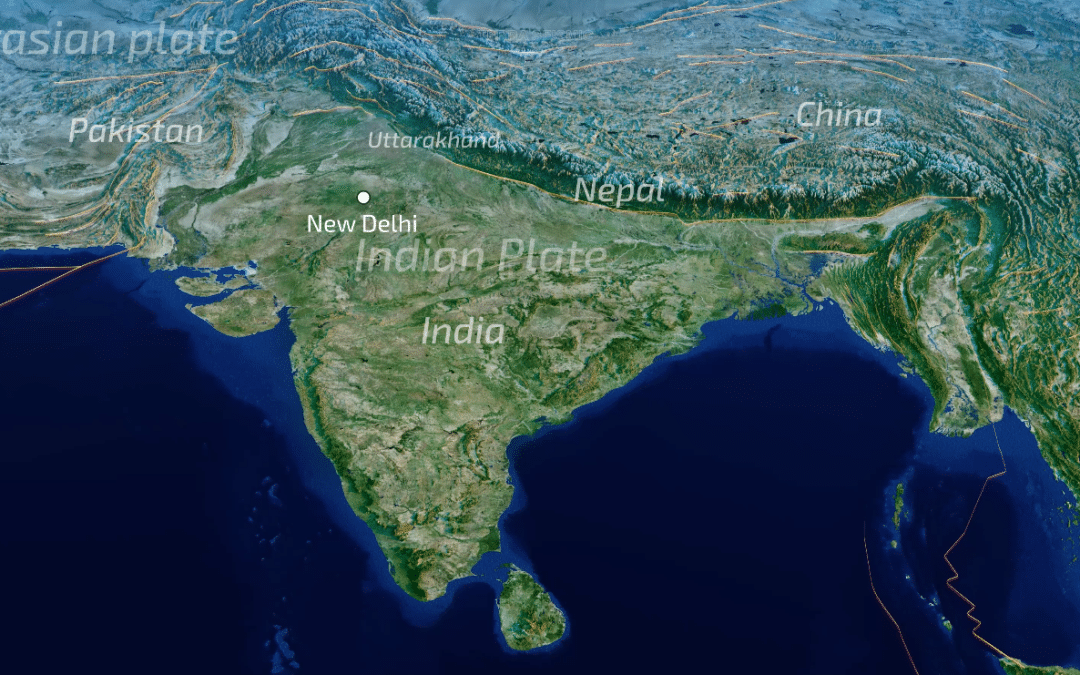The seismicity in the India-Pakistan-Nepal region is primarily defined by the collision between the Indian Plate and the Eurasian Plate. This major tectonic interaction is responsible for the area’s complex seismic and geological activities, including the creation of the Himalayan mountain range. Here are the key factors that influence seismicity across this region:
Himalayan Frontal Thrust: The ongoing northward movement and subduction of the Indian Plate beneath the Eurasian Plate along the Himalayan Frontal Thrust (also known as the Main Frontal Thrust) is the main driver of seismic activity. This process generates significant seismic energy and results in frequent, often powerful earthquakes.
Crustal Deformation: The immense pressure from the colliding plates causes substantial deformation within the crust, uplifting (creating the Himalayas), and triggering numerous seismic events along various fault lines.
Interplate Earthquakes: Many earthquakes in this region are interplate earthquakes, occurring at the juncture between the Indian and Eurasian Plates. These can be extremely powerful, such as the 2005 Kashmir earthquake and the 2015 Nepal earthquake.
Intraplate Earthquakes: In addition to boundary-related seismic events, intraplate earthquakes occur within the Indian subcontinent. The stresses accumulated due to the ongoing plate collision contribute to these seismic events, which can occur at significant distances from the plate boundary.
Active Fault Systems: Numerous active fault systems, including the Main Boundary Thrust and Main Central Thrust, add to the complexity of the seismic activity. Each of these fault lines can generate earthquakes that affect large areas.
Historical Seismicity: The region has a long history of devastating earthquakes, influencing urban planning and disaster management strategies. Historical data from these events is crucial for understanding seismic patterns and risks.
Induced Seismicity: In some areas, particularly in parts of India, human activities such as reservoir-induced seismicity (due to large dams) and mining have contributed to seismic activity.
Tsunami Risk: While more relevant to the Indian Ocean boundaries of India, seismic activity in this region can also generate tsunamis, particularly in coastal areas.
Socioeconomic Impact: Given the high population density in many parts of this region, seismic events can have catastrophic impacts on communities, making earthquake preparedness and building resilience crucial priorities for governments and civil society.
These factors drive seismic activity in the India-Pakistan-Nepal region, which requires extensive monitoring and preparedness to mitigate the risks associated with earthquakes in one of the world’s most seismically hazardous areas.

